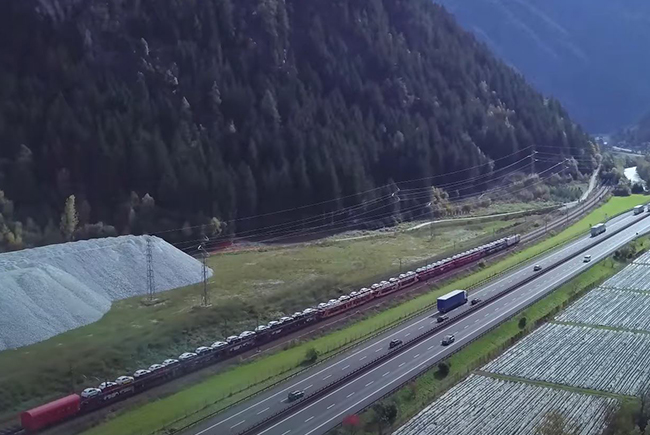Located in the centre of the Alps at the lowest altitude compared to the other Alpine passes (1,371 meters above sea level), the Brenner Pass has always been a transit and transport route of crucial importance for Europe. Today, the Pass is touched by a fourth of the entire transalpine freight traffic.
The current Brenner railway line has now reached a high level of saturation and the pressure of the community and local governments is equally strong in their pleas to transfer to rail the heavy traffic that today travels mainly by road along the Brenner motorway, with considerable impact in terms of air and noise pollution.
The intervention falls within the European TEN-T “Scandinavia-Mediterranean” Corridor, connecting Helsinki and Valletta, passing through Central Europe, the Tyrrhenian ridge and the main Sicilian cities, with a length of 9,400 kilometres.
The central alpine part of this alignment consists of the Munich-Innsbruck North Access Line, the Brenner Base Tunnel and the Fortezza-Verona South Access Line. The North Access line and the Brenner Base Tunnel have cross-border sections, whilst the South Access line is located entirely in Italy, along the Isarco and Adige valleys.
The Brenner Base Tunnel will extend for a length of about 55 kilometres between the stations of Fortezza (Italy) and Innsbruck (Austria), where it will be inserted underground into the existing bypass, also in a tunnel reaching an overall length of 64 kilometres.
The South Access line will extend for a length of approximately 180 kilometres between the stations of Fortezza (BZ) and Verona (VR) and will quadruple the current two tracks. The north end of the intervention consists of Lot 1 Fortezza-Ponte Gardena, which will mainly develop in a tunnel for a total length of 22.5 kilometres.
The project has received partial public funding.
Paola Firmi was appointed Extraordinary Governmental Commissioner for completion of the works.
The objectives
To increase the quantity and quality of the railway offering, a new railway line is currently under construction to cross the pass, the Brenner Base Tunnel – under the care of the European company BBT-SE “Galleria di base del Brennero – Brennero Basistunnel” to which the Verona-Fortezza access line from the south will be connected, is being built by RFI S.p.A. in Lots.
Technological and infrastructural interventions will make it possible to increase the capacity of freight transport, which can be quantified in terms of 60–90 more trains per day. The reduction of the constraints due to gradients will promote the use of longer and heavier trains with an increase in the transportable load of about 20% for each train. In addition to commercial speed, the standards of traffic regularity and punctuality will be raised.
Expected benefits
The keystone of the new performances will be the radical reduction of the maximum gradient. In the Brenner Base Tunnel, this will be contained within 7‰ and in the Fortezza-Verona line within 12.5‰, whereas the existing infrastructure has gradients which, reaching 26‰ along the pass and 23‰ between Fortezza and Verona, limit train speed to within 80 kilometres/hour in the most tortuous sections.
With the new works, it will be possible to separate the freight traffic from passenger traffic and, amongst these, long-distance services from local ones, with enormous benefits for passengers.
Local public transport will be able to travel on the historical line in a more efficient, faster and rhythmic way, whilst on the new tunnel section from Fortezza to Innsbruck, being 20 kilometres shorter than the current line, the time needed to change traction will no longer be necessary, eliminating the current difference in traction between Italy and Austria to reduce travel time by a third for faster trains, from the current 75 minutes to 25 minutes.
On the freight front, the specialisation of the lines will allow an increase in traffic from the north entering the Verona junction, with a significant impact also for the Quadrante Europa intermodal road/rail terminal, increasingly key to the Italian and European logistics system as the intersection point of two European TEN-T Core Corridors, the Scandinavia-Mediterranean and the Mediterranean, as well as the two Brenner (North-South route) and Serenissima (West-East route) motorways.
To prepare the terminal infrastructure for the future, a project was also recently launched which, by upgrading the existing railway infrastructure and through new technologies, will allow direct connection with the Brenner route, as well as with the railway line to and from Bologna/Mantua/Modena.

